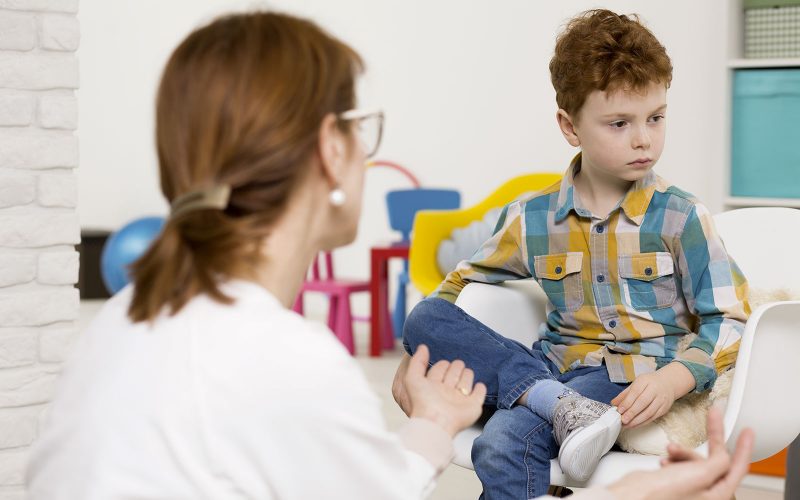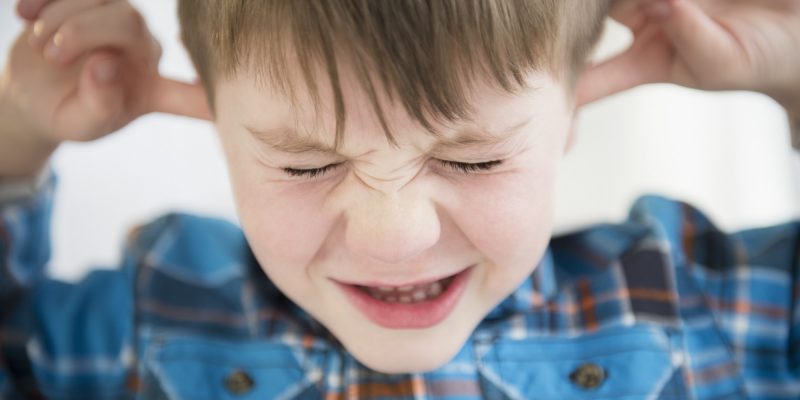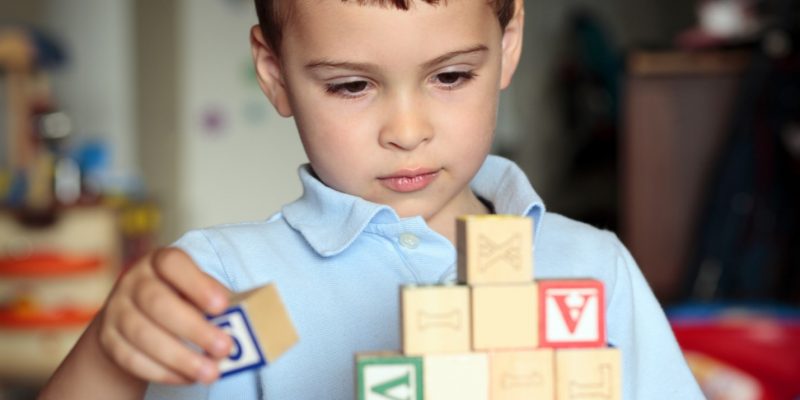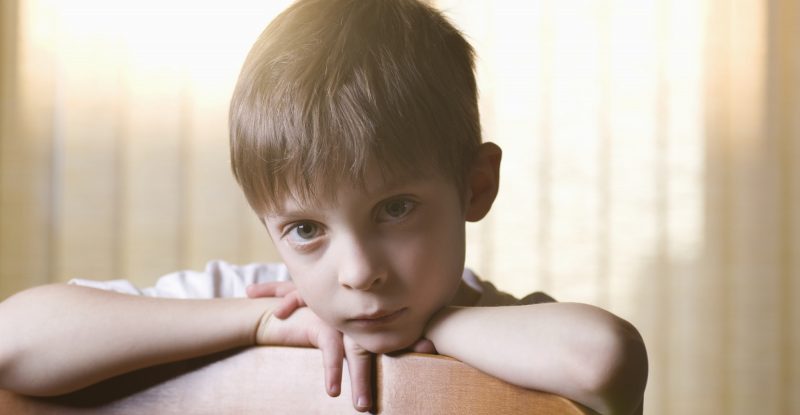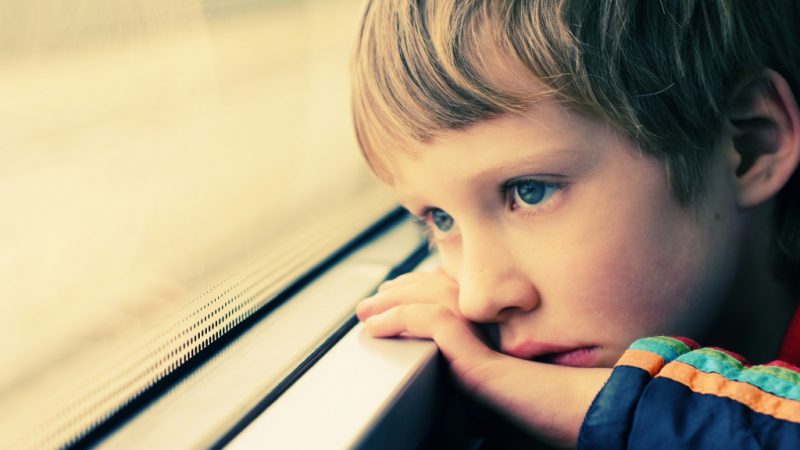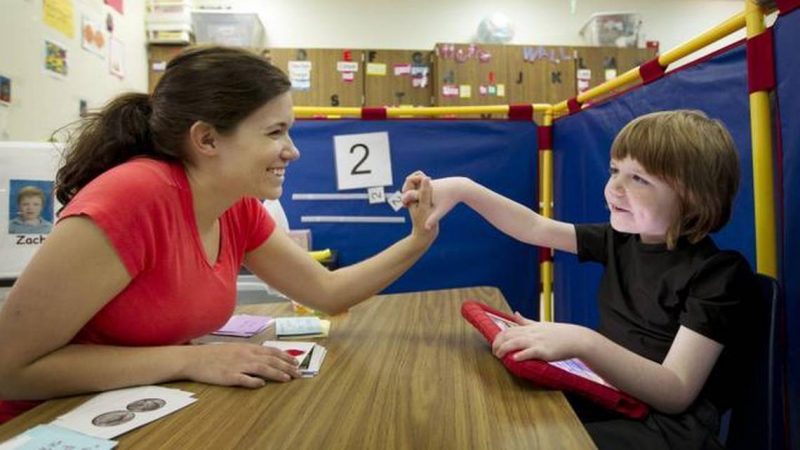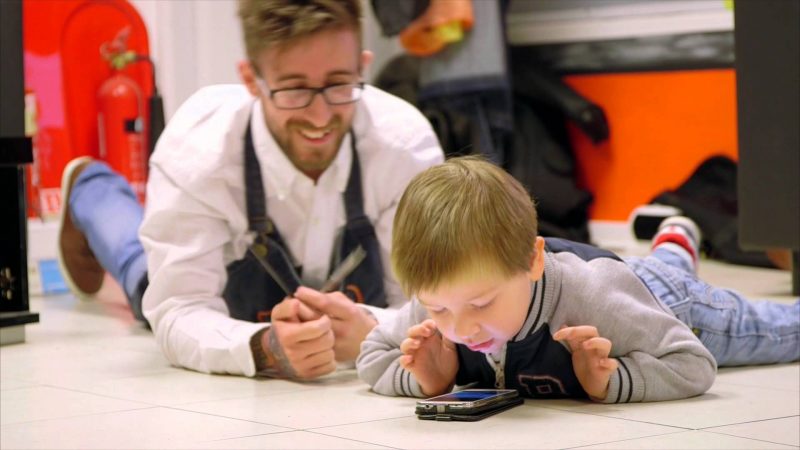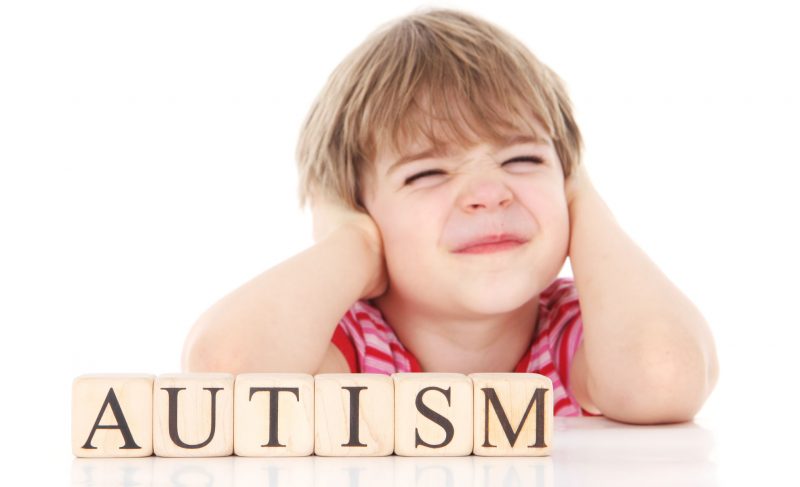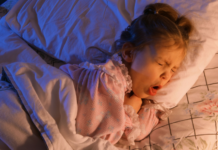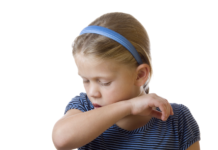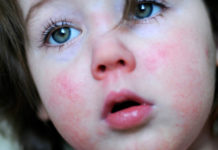Autism, or Kanner’s syndrome, is a mental disorder that occurs against a background of low social adaptation. Children with such a disease do not seek interaction with the outside world, they are deeply immersed in themselves. In mild form, this disorder occurs in about 4 out of 1,000 babies, and patients with severe signs of the disease are significantly less. Let us consider in detail what autism is, and what are its main symptoms.
Material Content:
- 1 What is autism?
- 2 Causes of Autism in Children
- 3 The first signs and symptoms of the disease in a child
- 4 At what age is the disease most often diagnosed
- 5 Key characteristics by age
- 6 Diagnosis of the disease
- 7 What tests will help identify autism in a child at home
- 8 Autism treatment in children
- 9 Methods of teaching a child to communicate
- 10 How to teach everyday skills
- 11 The prognosis for an autistic child
What is autism?
For many years, autism was considered a form of childhood schizophrenia, but now this version has been disproved. Kanner’s syndrome is classified as a mental disorder characterized by a persistent violation of the relationship of the child with society. This condition is due to pathological changes in the cerebral cortex, but science has not been able to establish why they occur.
In the course of the disease, autism is divided into several types.
He can be:
- Typical. In this case, the symptoms of the disease are noticeable at an early age. Such children are indifferent to reality and are inquisitive, do not respond well to external stimuli and do not seek to communicate with relatives or other children.
- Atypical. This disease does not immediately make itself felt, as a rule, its symptoms appear closer to 3 years. At the same time, it is quite difficult to diagnose atypical autism, since the symptoms are expressed implicitly.
- Hidden.There is very little information about patients with this diagnosis, since the clinical symptoms of this type of autism are weak and irregular. Most often, children are simply considered closed and unsociable, attributing all the oddities in behavior to character traits.
Signs of autism in children depend on the form and severity of the disease, which makes it difficult to make an accurate diagnosis. There are frequent cases when the disease is detected only after persistent symptoms develop that are difficult to correct.
Causes of Autism in Children
Doctors do not have an exact answer to the question, what is the cause of autism and why does it arise. It is believed that pathological changes in the brain due to which the disease develops are caused by disorders at the genetic level.
Relatively accurately identified only possible risk factors.
The likelihood of having such a baby increases in the following cases:
- one parent over 35 years old;
- pregnancy proceeds against a background of pathology;
- in the process of bearing a child, the woman’s body was exposed to negative influences (poor ecology, the use of potent drugs, abuse of alcohol, cigarettes or drugs);
- in the family of one of the parents, children with Kanner syndrome were already born;
- among relatives there are persons suffering from mental disorders.
There was a theory that autism most often occurs in babies who are the first-born. However, there is another opinion, some scientists argue that with the advent of each new member of the family, the risk that the next child will suffer from autism increases.
Did you know? Boys are diagnosed with this disease 4 times more often than girls. No explanation for this phenomenon has been found to date.
The first signs and symptoms of the disease in a child
The characteristic symptoms of Kanner's syndrome include the following symptoms:
- Refusal to communicate with others. The child avoids contact not only with adults, but also with peers, ignores it when he is addressed. Talking with someone first for such a patient is problematic, and if necessary, he experiences great discomfort.
- Disruption of interaction in society. Autistic kids prefer not to look into the eyes of others, ignore collective games and activities. A child with this disorder is often unable to even point a finger at what he needs. Instead, he uses the hand of a mother or other relative in the vicinity.
- Behavioral uniformity and a tendency to certain rituals. A child with a diagnosis of autism is able to react sharply to any, even a slight deviation from the "comfort zone". For example, he may get nervous when changing the usual route from the store to the house and create a real tantrum if the tea is not poured into the mug he used to use. Games such kids prefer monotonous, often they are fascinated by the ordering of objects, namely grouping them by size or color.
- Difficulties in verbal contact. Quite often, in such children there are delays in speech development, and sometimes the baby does not speak at all. But there is also the opposite situation, when a child for some time speaks better than his peers, and then stops talking. Sometimes autists speak unnatural, elaborate phrases, and their speech is characterized by the monotony of intonation.
- Echolalia. This term refers to the meaningless repetition of words and phrases behind the interlocutor. It is typical for children with Kanner’s syndrome to answer a question with a question, and you can ask about the same thing many times in a row, the child will monotonously reproduce what he heard.
- Intellectual disorders. Mental retardation in autists is a rather rare occurrence, and approximately 10% of these patients are characterized by accelerated development.But at the same time, children with this diagnosis often experience problems with concentration and concentration, in addition, they may be interested in only one discipline, for example, drawing or singing, and ignore the rest.
- Dulling the instinct of self-preservation. This phenomenon is called auto-aggression, many autists specifically cause injuries to themselves, for example, they bite their hands before the blood or strike. In addition, they are almost devoid of a sense of danger, and are able to run out onto the roadway or climb on to the windowsill. And having been injured, the child immediately forgets the negative experience and will be able to repeat these actions more than once.
- Strange gait. A distinctive feature of most autistic children is an unusual way of moving. Some people prefer to skip while others walk on toes, waving their arms, move with an extra step or swing while walking. In any case, such a baby is characterized by some angularity and awkwardness.
On a note. All of the listed symptoms in one patient are quite rare, as a rule, the presence of 2 - 3 described symptoms is enough to suspect autism.
At what age is the disease most often diagnosed
The diagnosis of autism can be given to a child as early as 2 years old with pronounced signs of this disease. Most often, symptoms appear when trying to socialize a baby, for example, send him to kindergarten, when his "dissimilarity" to other children of the same age becomes apparent.
But autism can make itself felt at a later age, while the level of intellectual development in such a child will be much higher. In other words, the disease is diagnosed when obvious symptoms appear.
Key characteristics by age
Depending on the time of appearance of the first signs of the disease, it is divided into the following types:
- Early childhood autism. This disease manifests itself before the age of 2 years and is characterized by a low attachment of the baby to the mother, a lack of response to sound stimuli in the normal state of hearing and inadequate behavior in response to external circumstances. Often, such children prefer to play with any one subject, while others ignore it.
- Children's autism. Such a disorder is diagnosed in children from 3 to 11 years old. Patients with a similar disorder by the age of 3 to 4 do not yet speak or pronounce only a few phrases, do not show initiative in communication, and hardly master elementary skills. Any change in the usual environment causes fear and irritation.
- Teenage Autism This form of the disease is diagnosed from 11 to 18 years. Teenagers with this problem do not feel the need for communication and for the most part tend to loneliness. Due to a lack of understanding of the feelings and moods of other people, they cannot build friendships or romantic relationships, and puberty is much more difficult than in ordinary adolescents.
Attention! These symptoms are not always evidence of autism, to make an accurate diagnosis it is necessary to consult a specialist and conduct a number of studies.
Diagnosis of the disease
In the process of diagnosis, it is primarily important to differentiate autism from other diseases that can cause similar changes in the condition of the child.
For these purposes, such studies are carried out:
- consultation of an otolaryngologist;
- MRI
- CT
- electroencephalography;
- analysis for hormone levels.
And also testing is carried out using various techniques that help to make a conclusion about the intellectual level of the child, his reactions and the severity of the symptoms of the disease.
What tests will help identify autism in a child at home
Diagnosis of autism is sometimes difficult even for experienced doctors, and it is impossible to identify this disease at home.But there are tests by which parents of babies aged 1.5 years and older can determine how likely their child is to have such a disorder.
You will need to answer the following questions:
- Does the child want to be held in his arms, put on his knees or rocked?
- Does the baby show interest in other children?
- Does he like to climb somewhere, for example, to climb stairs?
- Does the child play with parents?
- Is the baby able to point a finger at an object that attracted attention?
- How often is the child busy imitating some activity, for example, driving a machine or preparing “food” in a toy dish? Will he do it if asked?
- Does the child bring items to show them to their parents?
- How often does a baby look into the eyes of strangers?
- Can a pyramid or tower be built from cubes?
Attention! When most of the questions are answered in the negative, the baby is very likely to have autism. In this case, an urgent specialist consultation is needed.
Autism treatment in children
It is impossible to cure autism, it remains only to adjust the patient's behavior and instill certain skills in him.
As part of therapy, the following methods are used:
- classes at a speech therapist;
- behavioral therapy;
- sensory integration (motion treatment);
- art therapy (drawing treatment);
- animal therapy (treatment by contact with animals);
- tomatois (the use of sounds to affect the cerebral cortex).
In addition, children are prescribed drugs of the following groups:
- antipsychotics;
- nootropics;
- tranquilizers;
- vitamin complexes.
Also, a child may be prescribed a diet based on the exclusion of gluten and casein foods. The ban is imposed on dairy products, products from wheat, barley or rye. To understand how effective diet therapy is, restrictions will need to be followed for at least 6 months.
Methods of teaching a child to communicate
Not only specialists, but also parents should participate in the social adaptation of an autistic child.
To instill communication skills in your baby, you must adhere to the following rules:
- In games, give him the right to leadership and initiative.
- Give the child the opportunity to decide when the game ends.
- Involve a child in games with other children, not paying attention to his negative emotions.
- Regularly create situations where the baby needs to contact people.
- Always praise and reward the child for trying to communicate independently.
- If the child does not speak, look for other ways to “exchange information”, for example, through gestures, facial expressions, sounds or images.
Attention! Do not do something instead of a child if he did not ask. And also do not put pressure on the baby when making decisions. It takes him time to weigh everything and think it over.
How to teach everyday skills
Inoculating autistic elementary skills can take quite a while, so parents need to be patient. There is no single method exactly how to teach a baby to wash his hands, brush his teeth or put things in their place. This can be training in the form of a game or by personal example.
The main thing is to observe the following rules:
- Before you begin to master any skill, show the child the appropriate pictures or demonstrate several times how to do it.
- Perform actions in strict sequence and do not violate it. For example, when washing hands, first tighten the sleeves, then open the tap, and only then take soap.
- Repeat classes regularly so that the child gets used to doing something.
- Comment on actions in words, alternately showing their sequence.
- When you want to teach a child to use the toilet, it is advisable to put him on the toilet at the same time. It is not scary if at first nothing will turn out, it is necessary to repeat these actions regularly, accompanied by detailed explanations.
- Always praise the baby for success, or come up with a "bonus system".
- Do not scold if something does not work.
In many children with Kanner’s syndrome, the need to perform certain actions causes irritation, but you can’t indulge this and give up classes. Over time, the child will get used to it and stop responding negatively to requests to wash their hands or brush their teeth.
The prognosis for an autistic child
In the case of autism, it is difficult to make any predictions as to how much the child will be able to adapt to the world around him. But one must be prepared for the fact that he will never become “like everyone else”.
Only 10% of autists become relatively independent, make one or two friends and do not require constant support from their parents.
About 20% of patients are quite independent, but the level of their social adaptation cannot be called high. Most of the time, these patients prefer to spend at home, trying to avoid communication with outsiders.
About half of people diagnosed with autism need the support of professionals, and 10-15% require specialized care.
It is important to realize that being a parent of an autistic baby means completely changing your life. No need to compare a son or daughter with other healthy children and worry about it. It is better to enjoy any successes of your “special” child and be his support and support.



